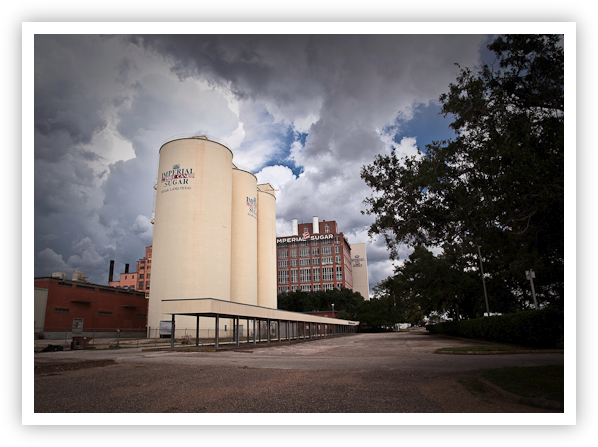I wasn't going to write this post since it's a photo-blogging cliche to rave about your new camera, new lens or other new gear. I really do believe David duChemin's mantra "Gear is Good, Vision is Better" but sometimes you just have to lay it on the line. I know some folks reading this post are going to hate me for writing it, but here goes.
Back in mid-July David wrote a post entitled Sens(or) and Sensibility where he postulated; 1) that sensor size really does matter in so many ways, but especially to depth of field and 2) to forget equivalency or more simply put, to forget the field of view crop factor between a full frame sensor and an APS-C size sensor. The ensuing comment war went on for over sixty comments all very passionately discussing the various theories of magnification, field of view, focal length and perspective.
Having used the 5DII for a few outings now I can assure you in no uncertain terms, the differences between a full frame sensor and an APS-C size sensor are huge and the difference between Canon's xD line and xxD line are very significant. I'll leave the technical discussions of FOVCF to the experts however.
The image below was taken late Sunday afternoon when it "looked" like a thunderstorm was finally going to end our drought here in southeast Texas (unfortunately it never rained here in Sugar Land). I looked outside, saw the wonderful clouds forming and grabbed my 5DII for a few quick exposures at the sugar mill, a site I've photographed several times in the past. I took several exposures of this scene using a single AF point positioned over the silos in the frame using apertures from f/5.6 to f/22. I wanted to see what the minimum aperture would be required to obtain enough depth of field to ensure the entire image was sharp. Boy was I in for a surprise.

Storm at the Sugar Mill
Copyright 2009 Jeff Lynch Photography
Shot taken with a Canon EOS 5D Mark II set on aperture priority (Av) using an EF 24-105mm f/4 L IS USM tripod-mounted with a B&W circular polarizer attached. The exposure was taken at 24mm, f/11 for 1/40th of a second at ISO 100 on Lexar Professional digital film. Post capture processing was done in Lightroom 2 and Photoshop CS4. Click on the image above for a larger version.
Using either of my 40D or 50D bodies I could have easily gotten away with any aperture greater than f/5.6 but with the 5DII even f/8 provided too narrow a depth of field and I ended up using f/11. I half expected this since I'd seen the same result in a previous post showing the water barrel and now started to understand just how different the depth of field of these two sensors really was. To use this camera effectively for landscape shots I would need to pay careful attention to both focus and aperture.
The other differences that hit me right away were the incredible detail provided by the 5DII and more importantly, the almost total lack of noise in my images. Normally I run each image through Nik Software's Dfine 2.0 noise reduction filter just to see if any areas need a little noise reduction. On my 50D this was a necessity for almost any high contrast or high ISO image. On the 5DII, Dfine could fine almost no noise at all, not even in the darkest shadow areas and blue sky.
So here's the good news and the bad news for crop body shooters. In my unscientific opinion, the difference between using a full frame sensor and an APS-C sensor is very real in terms of depth of field, although this may or may not be an advantage to a landscape photographer. I also feel the image quality of a full frame sensor is worth every penny of the 2x cost differential. I won't speak about field of view or crop factors since those discussions are way over my head, but I will say this; my EF 24-105mm f/4 L IS USM never looked anywhere this wide or this sharp on my 40D or 50D bodies. I took this shot at 24mm, standing at exactly the same spot as I've done in the past with my 50D and EF-S 10-22mm lens. And this shot looks much, MUCH wider and much less distorted. That's the good news.
Now here's the bad news. Once you see the results of an average shot taken with a full frame sensor you'll never want to shoot with a crop body again. I know I didn't after renting a 5D and trying it out a few months ago. Fortunately the price of full frame DSLRs should begin to fall as each manufacturer reports significant declines in their quarterly earnings and becomes desperate for sales revenue. And as each manufacturer comes out with another new FF model, the prices for discontinued full frame models like the original 5D becomes more palatable. I hate to sound like a fanboy convert but the lure of the full frame sensor is very strong and for good reasons. I hate to say it but I really believe the full frame sensor will allow you to dramatically improve your photography and after all, isn't that what we all aspire to?
My recommendation is simple. If you're in the market for a new DSLR of any brand, rent one with a full frame sensor for a week. Shoot almost any subject with your current DSLR and the full frame DSLR you've rented. Look at the RAW files from both cameras at 100% crop and I promise you, you'll be astonished by the difference.
Posted in Photography Tagged: Canon, Canon 5D Mark II, Photography, Texas Towns
![]()
No comments:
Post a Comment